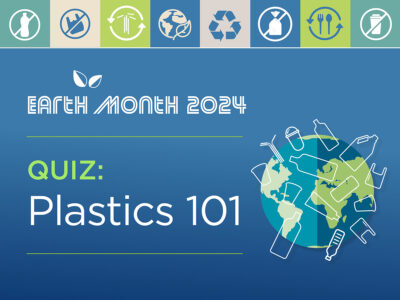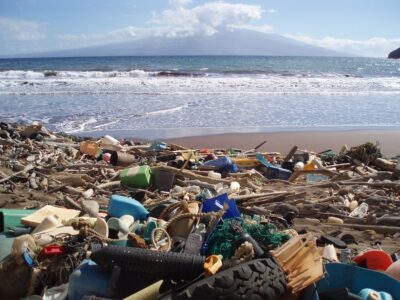
“You Asked” is a series where Columbia Climate School experts tackle reader questions on science and sustainability. Today, we’re talking trash with Steven Cohen, director of the Earth Institute’s Research Program on Sustainability Policy and Management.
Cohen is an expert on sustainable cities, waste management, and environmental policy. He helped us answer the following question from a reader:
Is there an environmental benefit to using biodegradable disposable plates and cutlery that are then thrown out with the trash in closed plastic bags — and presumably dropped in landfill?
Trashing biodegradable materials
Biodegradable plates, cutlery, and other materials are designed to break down through natural processes, so they can decompose into the earth without leaving behind any toxins.
Most of the trash of the past used to be biodegradable, says Cohen, but the plastics revolution changed that – for the worse. Now, our landfills are full of material that will never decompose. If you toss your computer keyboard in the garbage, for instance, that thing is not going anywhere for a very, very long time.
“So, any biodegradable material is better than material that’s not biodegradable,” he says.
In addition, millions of metric tons of plastic waste has made its way into the ocean, where it’s threatening ecosystems and marine life.
So, regardless of whether your biodegradable fork is sealed in a trash bag or not, it’s way better than adding another piece of plastic to the problem.
An even better alternative would be to use reusable cutlery instead of single-use items, but modern life doesn’t always give us that option.
The future of trash
The amount of waste on our planet is the real issue.
The population on our planet keeps growing — as does the amount of stuff we use (and the amount of trash we toss away), but the amount of planet remains unchanged. So, our landfills are just going to get more squeezed with waste. And, the price of landfill real estate is only going to keep going up — unless we get creative with our garbage.
It’s already a huge problem, says Cohen. In places like New York City, there’s so little space for waste that a lot of the garbage has to get shipped out to places like Virginia and Mississippi.
The ideal future for our trash is to depart from our current model of extracting materials from Earth, producing products, and creating waste. Instead, Cohen explains that we should shift into a model known as the “circular economy,” in which waste is eliminated, resources are repurposed and recirculated, and more nature is regenerated.
If landfills were set up to support this model, they would use artificial intelligence and automation to sort waste, so materials could be repurposed and the waste could be mined for natural resources, says Cohen. The task of sorting waste involves too much toxic material — and too much time-intensive work — for humans to perform it, but technology may offer a great solution to those issues.
This system would sort products like paper, wood, and plastics to be reused, repaired, remanufactured, and recycled, and extract natural materials that could be reused or returned to the earth. Like, taking nitrogen from food waste and turning it into fertilizer for farms.
“We need to end the linear model of mining, using and discarding resources,” says Cohen. “This would help close the system of production and consumption.”
With eight billion people on the planet, finding better ways to manage waste — and repurpose it — will be key for developing environmentally sustainable cities, he says.
The real value of biodegradable materials (and all individual climate action)
The intention behind using biodegradable materials is what really matters, says Cohen.
“The thought process is important,” he explains. “It gets you thinking about recycling, and waste, and the garbage you produce. All of these technologies and ideas teach you about the planet, and its limits, and your relationship to it.”
Using biodegradable materials signifies that you value the planet, and it probably gets you thinking about other ways you can help protect it.
And that’s what really matters — no matter what happens to your fork in the garbage.
Emily Halnon is a freelance writer based in Eugene, Oregon.



The idea of automating trash sorting is a grand idea. I believe that currently, there’s little to no money that can be had in recycling simply because of the need for manual hours needed to sort through our trash. If an automated solution that can sort through a large variety of trash is developed, I’m sure money can be made this way making it a lucrative endeavor for capitalists. As someone who works in the HVAC field, I can say that there’s a lot of things we have to junk but can theoretically still be salvaged for parts to be reused. The only problem is the volume and automated sorting will really help.